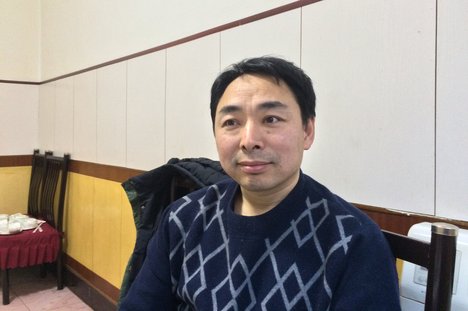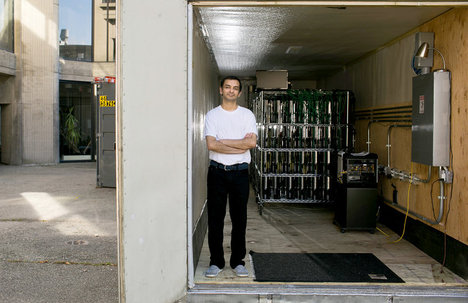(p. A4) CALAIS, France — The sun had barely set when a 23-year-old Eritrean woman who gave her name as Akbrat fell into step with dozens of other men and women and started scaling the fence surrounding the entrance to the French side of the Channel Tunnel.
The barbed wire cut her hands, but she did not feel the pain. The police seemed to be everywhere. She thought of her 5-year-old son back in Africa and ran, zigzag through the falling shadows, once almost colliding with an officer in a helmet.
Then she was alone. She slipped under the freight train and waited, clambering out just as it began moving.
But before she could hurl herself onto the train bed transporting trucks filled with Britain-bound produce, a French officer caught up with her, she recalled in an interview on Thursday. Blinded by tear gas, she stumbled and bruised her right ankle. After being ejected from the complex around the tunnel, it took her five hours to limp the nine miles back to the refugee camp of makeshift shelters that its 3,000 inhabitants call the “jungle.”
“You’re lucky you weren’t killed,” someone told her.
“I’m not lucky,” she responded. “I’ll be lucky when I’m in England.”
. . .
For many of the migrants who have been coming to the Continent from Africa, the Middle East and beyond, Calais, a mere 21 miles from the white cliffs of Dover, is their last stop. If they make it across to Britain, many believe they will have reached safety and a better life.
For the full story, see:
KATRIN BENNHOLD and ALISSA J. RUBIN. “Migrants Taste Freedom at Tunnel’s Door.” The New York Times (Fri., JULY 31, 2015): A4 & A10.
(Note: ellipsis added.)
(Note: the online version of the story has the date JULY 30, 2015, and has the title “Migrants in Calais Desperately Rush the Channel Tunnel to England, Night After Night.”)
See also:
ALISSA J. RUBIN. “Hundreds of Migrants Try to Clamber Onto Trains and Cross Channel to England.” The New York Times (Fri., JULY 29, 2015): A6.
(Note: the online version of the story has the date JULY 28, 2015, and has the title “Hundreds of Migrants Try to Cross English Channel on Freight Trains.”)
MATTHIAS VERBERGT and NOEMIE BISSERBE. “Migrant Crisis Continues at U.K.-France Border; Up to about 1,000 migrants spotted Wednesday night near the Eurotunnel terminal site.” The Wall Street Journal (Fri., JULY 31, 2015): A7.
(Note: the online version of the story has the date JULY 30, 2015.)


